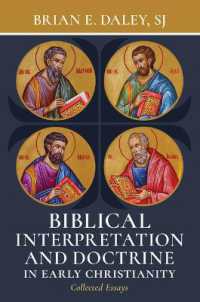- ホーム
- > 洋書
- > 英文書
- > History / World
Full Description
How can we comprehend the socio-political processes that give rise to extreme violence, ethnic cleansing or genocide? A major breakthrough in comparative analysis, Purify and Destroy demonstrates that it is indeed possible to compare the Holocaust, the Rwandan genocide and ethnic cleansing in Bosnia-Hercegovina while respecting the specificities of each. Based on the essential distinction between massacre and genocide, Purify and Destroy identifies the main steps of a general process of destruction, rational and irrational, born of what Semelin terms 'delusional rationality', responding to fears, resentments and utopias, and re-modelling the social body by eliminating 'the enemy'. The main stages that can lead to a genocidal process, with ordinary people becoming perpetrators, are also identified.
Contents
Foreward by Stanley Hoffmann Acknowledgements introduction: Understand? I. The Imaginary Constructs of Social Destructiveness Unpromising Avenues The power of imaginary constructs From the identity narrative to the figure of Traitor From the quest for purity to the figure of the Other in excess From the security dilemma to the destruction of the enemy II. From Inflammatory Discourse to Sacrificial Violence The intellectual springboard Reaching political legitimacy From the religious to the sacrificial Societies torn between adhesion, consent and resistance III. International Context, War and the Media A structure of political opportunities Spilling into war Telling the world: a last resort? IV. The Dynamics of Mass Murder The decision-making process and the deision-makers The organisation of mass murder and the actors involved From collective indifference to popular participation Morphologies of extreme violence V. The Vertigo of Impunity Crossing the threshold into violence The tipping mechanism The dual learning process of massacre The killers' profiles: revisiting 'the banality of evil' Sexual violence and other atrocities VI. The Political Uses of Massacre and Genocide Instrumentalisations of a word that is impossible to define? Distancing genocide studies from the frame of law Destroying to subjugate Destroying to eradicate Destroying to revolt Conclusion: The 'Never Again" Refrain Crisis prevention: arguments and illusions An ethics of responsibility 'The revenge of passions' Appendices A. Investigating a massacre B. Comparing massacres Bibliography Notes Name Index Subject Index








